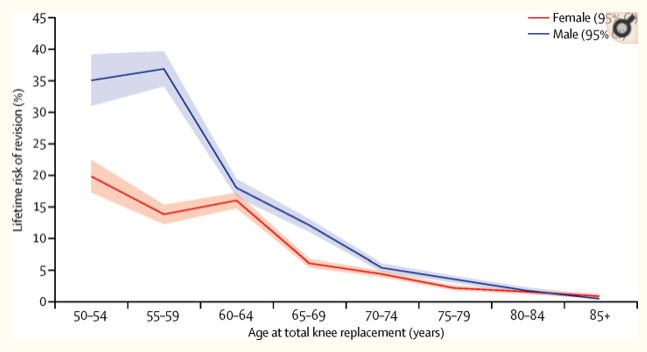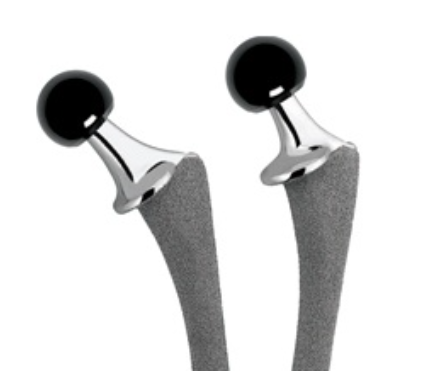
Come Back When You Can’t Walk
Come Back When You Can’t Walk https://hip-replacement.info/wp-content/uploads/2020/04/survey-1024x549.jpg 1024 549 teamhri teamhri https://secure.gravatar.com/avatar/0641286428e191b5da15eb0bafa1288b?s=96&d=mm&r=gIf you were told to come back when you can’t walk to have hip replacement surgery, it’s time to find a new hip replacement surgeon.
“Come back when you can’t walk.” People have reported hearing this from legacy orthopedic surgeons for generations. Once upon a time it was actually pretty good advice: back in the day implants were only expected to last ten to fifteen years, after which the ball, shaft, cup, or liner would likely fail. Metal breaks. Cement cracks and loosens. Bones don’t always heal right. When an implant fails you need a revision surgery. These surgeries carry a higher risk of complications such as infection, dislocation, bleeding, and pain. So, if you have a hip replacement surgery at twenty, thirty, or forty years old, you were doomed to require a risky revision. Potentially more than one. Yuk. Thankfully, times have changed.
Recent studies show that there’s a good chance your artificial hip to last as long as you do. A study from the Lancet in 2017 provided some really useful information to help you decide if the risk of having hip replacement surgery again would still be worth it. This data was obtained by combining databases on results of hip replacement surgeries around the world.

The good news is if you are 85 or older there’s a greater than 98% chance your hip replacement will last longer than you. The bad news is that’s because you’re more likely to die of something else in the meantime. On the other end of the curve are men in their fifties. Even a male athlete would have a 35% chance of needing a revision at some time in his life. Hmmm. Thirty five percent seems like a lot.
A second bit of information comes from registry studies. These are lists of everyone who underwent hip replacement surgery in a country, followed out over time. In Australia the failure rate is 0.65 per 100 years observed after implant. You get the likelihood of having your hip replacement surgery redone by multiplying 0.65 times the number of years after surgery. So, the likelihood you would need hip replacement surgery again after 10 years is 6.5%, at twenty years 13% and thirty years 20%. Of note, we don’t have a registry in the US, and the numbers are different for other countries, many of them higher than the Aussies.
We have some other good things going for us today. Surgeons have learned a lot about hip replacement approaches over the last sixty years, and there’s good reason to believe that the best implants today (a ceramic ball and titanium socket lined with polyethylene plastic, such as the Smith and Nephew Echelon shown here) will last longer than the stuff they used in the past. In addition, minimally invasive hip replacement approaches (anterior hip replacement, direct lateral hip replacement) have shortened the recovery from six to twelve months of misery in the old days, to two to six weeks today. As a result of all this information even the extremely conservative American Academy of Orthopedic Surgeons confirms that today no one is too young to have a total hip replacement! The decision to pull the trigger for surgery is not based on age, it’s based on how badly you need the surgery.

In the meantime, it’s up to you to get informed. One thing that is clear from the registry data is that not all surgeons are equal. Not even the very best surgeons are perfect the first time they perform an operation, or the second, or the third. That’s why we recommend finding a surgeon who has replaced thousands of hips using a minimally invasive approach. Second, many people are hurt by hospitals: errors, infections, and blood clots from being over sedated and under active. You can avoid those risks by choosing a surgeon to do your hip replacement surgery in an Ambulatory Surgery Center. Finally, you deserve the best, make sure you get it. Choose a surgeon who always implants a ceramic ball into a titanium cup lined with polyethylene plastic. Like the Smith and Nephew Echelon above.
Another thing to consider is that nothing good is happening while you wait. For one thing, you’re in pain. Which stinks. In addition, your surgeon will want you to be as fit as is possible going into surgery. As you become more and more inactive due to hip pain, you’re at risk for developing into a couch potato. That means heart disease, gaining weight, weak lungs, and muscle atrophy. That doesn’t sound good. And it makes surgery, when you finally do have it, higher risk.
The bottom line is that hip replacement surgery is a proven way of relieving hip pain due to advanced arthritis. The younger you are at the time of surgery, the more likely it is you will require a revision. But today’s implants and minimally invasive approaches have made it easier to have surgery that is expected to last longer. The truth is that if you have made it this far into this article there’s a good chance you have already waited too long to have your hip replaced.
So, the only person who can really decide if surgery is right for you is the one feeling the pain. This year more than 300,000 hips will be replaced in the United States. If you have pain in your hip due to severe arthritis that prevents you from doing the things that are important then you should remember the big four: have your hip replaced (1) by an experienced surgeon (2) who uses a minimally invasive approach (3) in an ASC (4) with a ceramic ball in a titanium socket and a polyethylene plastic liner. If your surgeon told you to come back for hip replacement surgery when you can no longer walk because of your age, then it’s time to find a new surgeon.
- Posted In:
- Hip Replacement
